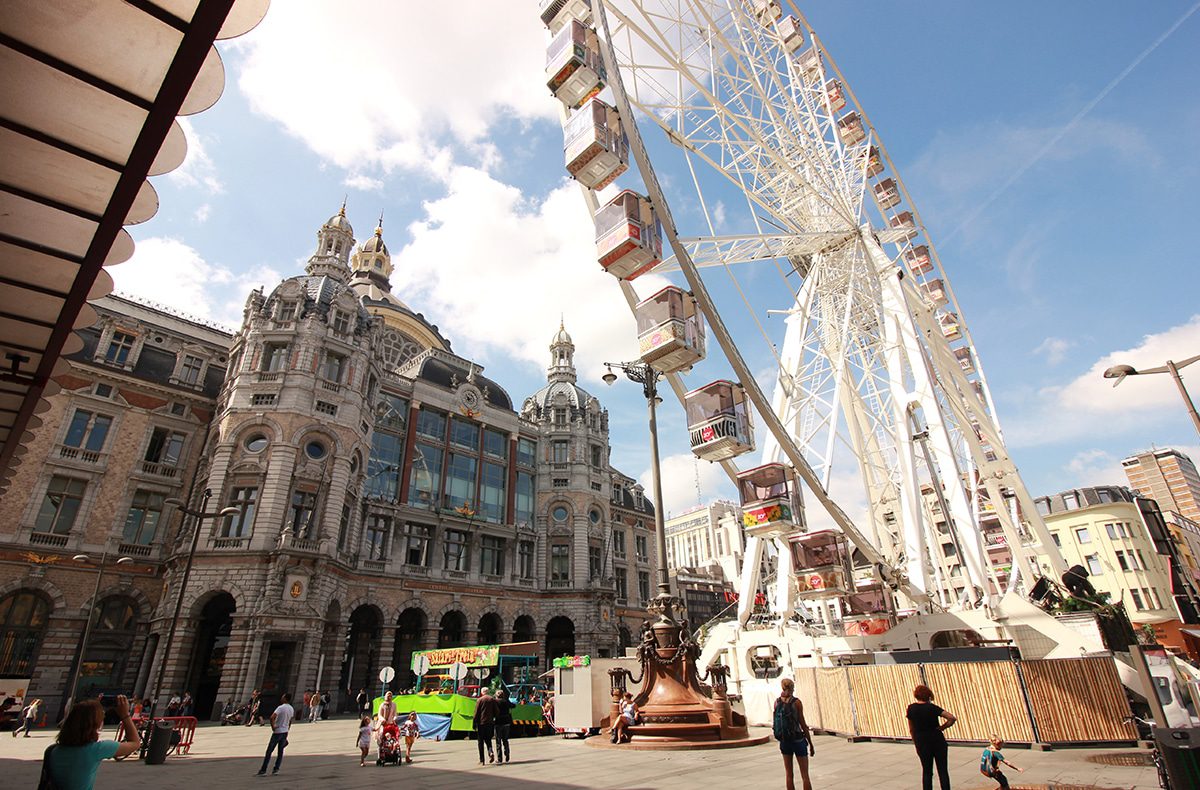
Food, music, and art are three of life’s most popular pleasures. They can be enjoyed by almost anyone in almost any environment. You’ve probably taken delight in at least one of them today already. I certainly have.
But it’s time we acknowledge the truth: the food-music-art tourist trap is ruining travel.
This is an admittedly inflammatory statement. Even if you deem it to be true in some sense, the way it was just presented provokes a kneejerk reaction. Either it jibes with a previous experience of yours (in which case you might be relieved or even excited to see someone else express it in print), or it seems—at best—so oversimplified that you suspect I’m unqualified for my job.
And that’s so irksome about the internationally ubiquitous food-music-art tourist trap, which we’ll henceforth call the GastroJam HipFest. You’ll find them all around the world, from Seoul to Cape Town to Ljubljana to Rio to Vancouver. The majority of them are mostly fine—maybe the prices are a little high, maybe the restrooms are a little hard to find, but it’s hard to spend a day eating and relaxing and looking at pretty things only to walk away thinking, “Well that sucked.” It’s hard to really hate it.
I’m not making my case well so far. But hopefully we’ll get there.
While a GastroJam HipFest has a reasonably high floor as a Thing to Experience When You Are in a New Place, it also comes with a cramped ceiling. I would argue this is because it’s so obviously forced, like the Epcot Center version of a cultural celebration.* Indeed, the GastroJam HipFest belongs to the ever-growing concept cloud that includes things like globalization and gentrification, and it deserves the same kind of scrutiny.
*Appropriately enough, the Epcot Center does have its own annual GastroJam HipFest. Until recently the musical element was known as “Eat to the Beat.”
I don’t want to oversell the dreary homogeneity of GastroJam HipFests. In many cases the organizers are clever and well-intentioned people, and they often recognize the importance of putting a local stamp on the event. Everybody likes a little local flair—if you’re from the area, it brings both pride and potentially money in the pockets of you or your friends; if you’re a visitor, you’re getting an authentic taste of Place X, which always plays great on Instagram.
But there are only so many local beers you can sample, local artisans whose jewelry you can peruse, or local bands whose covers of “Beat It” you can tap your toes to before you start noticing how every GastroJam HipFest just kind of blends together.
In defense of the organizers, there are only so many ways to pet a cat (or in this case, create a public gathering with mass appeal and money-making potential). And like most reasonable humans, I have nothing against songs or ceramics or assorted fried things on sticks. These are precious gems of civilization. Our lives would undoubtedly be worse without them, and so would any festival.
That the GastroJam HipFest is ultimately unsatisfying is due not to the ingredients it features; it’s because of one crucial component it lacks. You could call it authenticity, or local spice, and such terms can be useful shorthand. I think it’s also helpful, if a bit more cumbersome, to use a more expansive description—what the GastroJam HipFest is missing is a creation story derived from the deep and unique weirdness of a small group of people who lived together in a specific time and place.
When you’re at a real festival—like La Tomatina de Buñol, the Spanish tomato war; or Songkran, the Thai New Year celebration/water fight—you see the difference immediately. All those years of tradition certainly help. It’s possible that, given some decades, a GastroJam HipFest could accumulate similar name recognition and social cachet.
A GastroJam HipFest is unlikely to last that long, though, because of the motivations that brought it into being in the first place. A place puts one on because it wants to attract visitors, and it wants to attract visitors because it wants their money. A GastroJam HipFest is, therefore, first and foremost a business. And most businesses have a very short shelf life—around 65% fail in their first ten years.
It’s fair to say, at this point: so what? Who cares if GastroJam HipFests are kind of repetitive or even lame? If you don’t like them, don’t go to them. Let people enjoy things. And to this I would reply that, yes, there are bigger problems in the world. But I’d add that sometimes slopes really are slippery, and the spread of cookie-cutter tourist traps contributes to the steamrolling of international idiosyncrasies that make the world a more beautiful and interesting place, and in the process undermines a great deal of travel’s transformative potential, which is matched by few other experiences a person can have, if they’re lucky enough to have it.
Most of us don’t spend much time in deep contemplation of why we travel (or why we do most things, for that matter). We operate on a simpler plane: we remember times we felt happy or content, and we seek to replicate the conditions under which we felt those nice sensations. This saves us a great deal of time and mental energy. It can also mean we sleepwalk through a life that feels just a bit off in subtle, gnawing ways. One day, we may wake up to realize we’ve paid viscounts’ ransoms for IPAs and chili dogs, and ask ourselves: where are we?
We’re everywhere and nowhere. We now exist not in the flesh-and-blood world of Earth, but a vast interconnected digital consciousness. We’re floating in a primordial haze of cheerful cleanliness, nonthreatening quirkiness, contactless payments-enabled convenience. A feast for the senses, with all possible allergens accounted for. A unique, once in a lifetime experience.
We’re at the GastroJam HipFest. It’s like we never left home at all.


